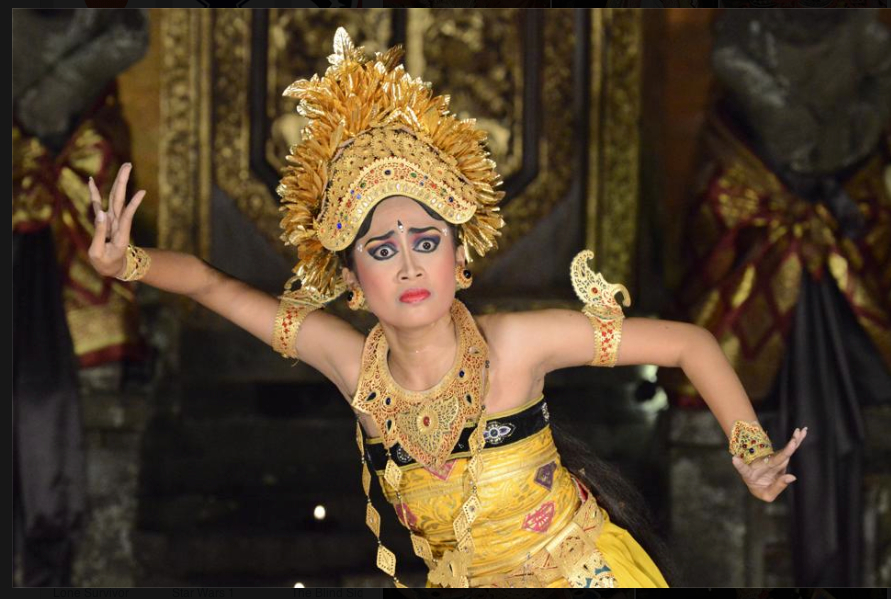|
BarkellWH -> RE: Flamenco and Classical guitar duet (Sep. 8 2014 0:05:13)
|
quote:
Some of the best Balinese musicians I have known have expressed puzzlement at European classical music--and Balinese gamelan is some of the most complex and sophisticated music on the planet.
There are three main streams of gamelan music in Indonesia--Sundanese, Javanese, and Balinese--and all three are very complex and sophisticated. You no doubt are aware that the gamelan is native to Indonesia (primarily Java). It reached its apex on Java during the Majapahit Empire, a Hindu empire that lasted until Islam began taking over in the 14th century and gradually forced the Hindu Majapahits further and further east on Java, until the remains of the Empire ended up on Bali, where it continues today. Yet, interestingly, the three gamelan styles--Sundanese, Javanese, and Balinese--continue in their respective regions today.
Although the gamelan originated on Java, one of the most important components of the gamelan (in Sunda, Java, and Bali), the Sinden, (always a woman who sings beautifully and hauntingly). has been heavily influenced by Indian music. While I was living in Jakarta and assigned to the U.S. Embassy, I became good friends with an ethno-musicologist who was based in Bali and had lived there for many years. He had written many monographs on both the gamelan and, specifically, on the development of the gong, which is another Javanese innovation. I had a gong made in Bogor, a center of gong-manufacturing located an hour out of Jakarta, and I still keep it in our home, where it is an interesting artifact used to call guests to dinner.
Interestingly, Western music has not made much inroad into the gamelan, but the reverse is certainly true: The gamelan has influenced Western music. The following is extracted from "American Mavericks," in Association with the San Francisco Symphony.
"Canadian composer Colin McPhee was not the first Westerner to have his life changed by Asian music. The French composer Claude Debussy, too, had heard a Javanese gamelan at the 1889 Paris World Exhibition, and tried to imitate its harmonies. But McPhee went further - much further - to Bali itself. He had spent the 1920s in New York City, writing highly rhythmic music of repeating patterns under the spell of Igor Stravinsky. By the late 1920s, according to his biographer Carol Oja, he was at a compositional impasse, disillusioned with writing esoteric music for small audiences. "Quite by accident," as McPhee put it, he heard some recordings of Balinese music released in 1928 on the Odeon label. [Balinese gamelan recording fades in beneath the following] "The clear, metallic sounds," he later wrote, "were like the stirring of a thousand bells, delicate, confused, with a sensuous charm, a mystery that was quite overpowering.... I returned the records, but I could not forget them. I knew little about the music of the East. I still believed that an artist must keep his mind on his own immediate world. But... after I had read... the quite fabulous accounts of these ancient and ceremonial orchestras, my imagination took fire, and... I determined to make a trip to the East to see them for myself."
McPhee and his wife, the anthropologist Jane Belo, visited Bali for six months in 1931, and returned the follow year for a longer visit. They found a spot high in the hills near the little village of Sayan, perched on a mountain ridge, and built a house in Balinese style, made of bamboo and a thatched roof. There were no stores around, just an open market every other day, nor was there plumbing or electricity. McPhee interviewed Balinese musicians and eventually borrowed gamelan instruments and started his own gamelan - an orchestra of metallophones and gongs. The experience changed him forever. Returning to Paris when his visa expired, he "found himself 'restless' at concerts and claimed that 'the programs of new music that I once delighted in now seemed suddenly dull and intellectual.' He longed for the magic of the 'sunny music" of Bali."
In 1936 McPhee wrote what would become and remain his most famous composition, Tabuh-Tabuhan. Half composition, half transcription, this was the first attempt to reproduce the patterns of Balinese music using a conventional European orchestra. From the very opening, it uses a simple four-note row in different permutations and at different rhythmic levels at once, just like much Balinese music. The second movement begins with a flute melody that is McPhee's own, but written in an exotic scale and sounding like a Balinese suling flute. The third movement is closest of all to Balinese music, basically an orchestral transcription of one of the Odeon recordings McPhee had found. However, even in this he was following Balinese practice, because composers of traditional Balinese music start with traditional melodic formulas and place them in new combinations. As McPhee himself wrote, "In Bali music is not composed but rearranged."
Bill
|
|
|
|

